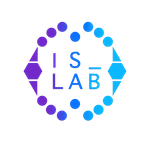N. Bassiliades, I. Vlahavas, “R-DEVICE: An Object-Oriented Knowledge Base System for RDF Metadata”, International Journal on Semantic Web and Information Systems, Amit Sheth , Miltiadis D. Lytras (Ed.), Idea Group, Vol. 2, No. 2, pp. 24-90, 2006.
Author(s): Nick Bassiliades, I. Vlahavas
Keywords: RDF, Object Data Model, CLIPS, Descriptive Semantics, Deductive Rules, Production Rules, Generalized Path Expressions, Aggregation, Materialized Views, RuleML.
Tags:
Abstract: In this paper we present R-DEVICE, a deductive object-oriented knowledge base system for reasoning over RDF metadata. R-DEVICE imports RDF documents into the CLIPS production rule system by transforming RDF triples into COOL objects and uses a deductive rule language for reasoning about them. R-DEVICE is based on an OO RDF data model, different than the established triple-based model, which maps resources to objects and encapsulates properties inside resource objects, as traditional OO attributes. In this way, fewer joins are required to access the properties of a single resource resulting in better inferencing/querying performance, as it is experimentally shown in the paper. Furthermore, RDF can interoperate seamlessly with other web data models and languages. The descriptive semantics of RDF may call for dynamic redefinitions of resource classes, which are handled by R-DEVICE effectively. Furthermore, R-DEVICE features a pow-erful deductive rule language for reasoning on top of RDF metadata. The rule language includes features such as normal and generalized path expressions, stratified negation, aggregate, grouping, and sorting, func-tions. The rule language supports a second-order syntax, which is efficiently translated into sets of first-order logic rules using metadata, where variables can range over classes and properties, so that reasoning over the RDF schema can be made. Users can define views which are materialized and incrementally main-tained by translating deductive rules into CLIPS production rules that preserve truth. Users can choose be-tween an OPS5/CLIPS-like and a RuleML-like syntax. Finally, users can define and use functions through the CLIPS host language.
